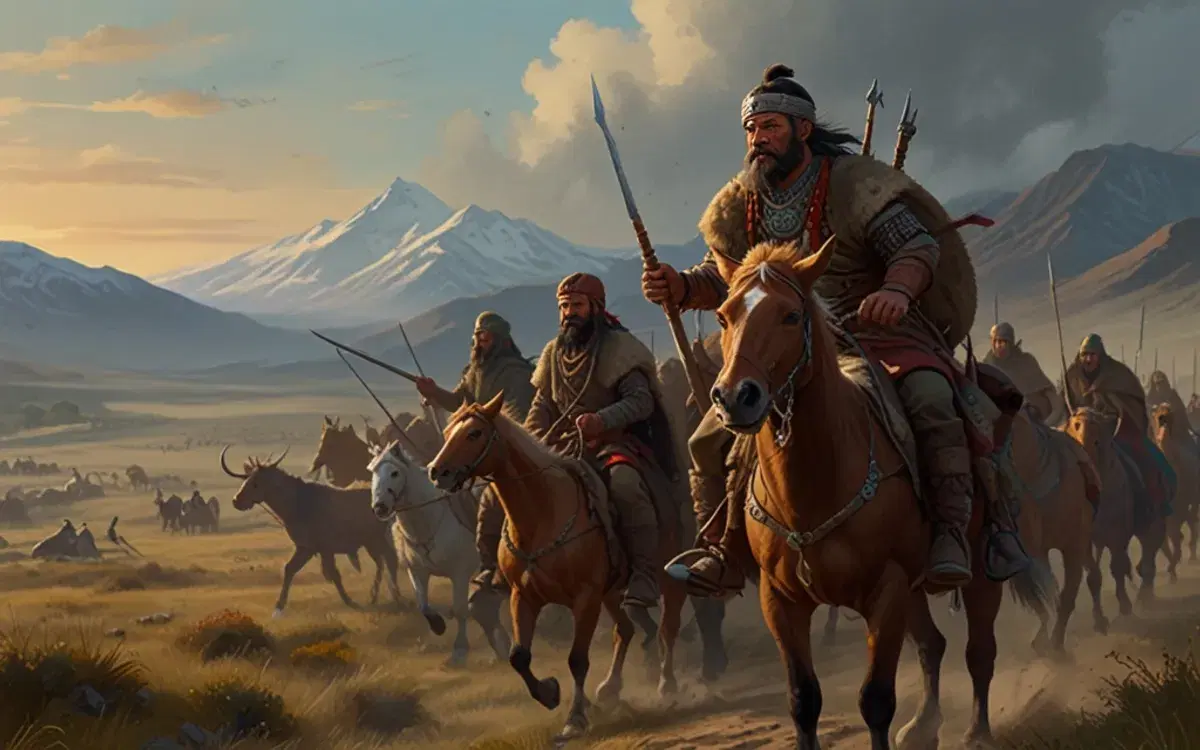Theodoric the Great, the East-Goths, and the Lombards: The Rise of Germanic Kingdoms After Rome
The tale of the East-Goths and Lombards is a rich and evocative narrative filled with courage, ambition, betrayal, and cultural evolution. These two Germanic tribes were instrumental in redefining the landscape of post-Roman Europe, each leaving behind a legacy of triumphs and tragedies. Their stories, marked by fierce battles, visionary leaders, and dramatic twists, capture the essence of the Dark Ages—a time of upheaval, transformation, and renewal.
Rise of Theodoric and the East-Goths
The East-Goths, or Ostrogoths, emerged as a powerful force under the leadership of Theodoric, a remarkable figure who rose to prominence after years of hardship. For much of their early history, the East-Goths were dominated by the Huns, serving as reluctant allies in battles such as the famous clash at Chalons, where they fought alongside Attila against their kin, the West-Goths. However, with the decline of the Hunnic Empire, the East-Goths seized the opportunity to forge their own path.
Theodoric, a descendant of a line of Gothic kings, was sent as a young hostage to Constantinople, where he spent a decade immersed in Roman culture. This unique experience shaped him into a leader who combined the martial spirit of his people with the sophistication of the Romans. Upon returning to his homeland at the age of seventeen, Theodoric quickly demonstrated his leadership prowess by capturing a major city without his father’s guidance. His charisma and ability were evident, and when his father passed away, Theodoric was unanimously hailed as king.

Rise of Theodoric and the East-Goths
With a vision for his people's future, Theodoric sought to establish a lasting homeland for the East-Goths. After years of wandering within the Eastern Roman Empire, where they faced formidable defenses like the walls of Constantinople, he brokered an agreement with the Emperor. With imperial consent, Theodoric led his people—numbering over 200,000, including women, children, and slaves—into Italy to challenge Odoacer, the reigning ruler.
Conquest of Italy
The journey across the Eastern Alps was a monumental undertaking. Accompanied by thousands of ox-drawn carts carrying their possessions, the East-Goths embarked on a campaign that would define their history. Odoacer, however, proved a resilient adversary. Theodoric's forces endured multiple battles and a prolonged three-year siege of Odoacer's capital before achieving victory. In a dark twist, Theodoric invited Odoacer to a seemingly amicable banquet, only to have him executed with his own sword—a rare act of treachery in an otherwise honorable life.
With Odoacer defeated, Theodoric established himself as the ruler of Italy, extending his domain to regions north and east of the Adriatic Sea. For thirty-three years, he governed with wisdom and vision, striving to reconcile the cultural differences between the Gothic and Roman populations. Infrastructure such as roads, aqueducts, and public buildings was restored, and new projects were undertaken to revitalize the land. Theodoric’s reign was marked by equal justice for Goths and Italians alike, reflecting his desire to foster unity and stability.
Fall of the East-Goths
Despite Theodoric's efforts to build a prosperous kingdom, the stability he achieved was short-lived. His death marked the beginning of the end for the East-Goths. The Eastern Roman Empire, now under the leadership of the ambitious Emperor Justinian, launched a series of campaigns to reclaim lost territories. Guided by brilliant generals like Belisarius, Justinian's forces dismantled the Gothic kingdom through relentless warfare. The once-mighty East-Goths were ultimately driven north of the Alps, disappearing from history as a distinct people.
Arrival of the Lombards

Arrival of the Lombards
As the East-Gothic kingdom crumbled, a new Germanic tribe emerged to fill the void in Italy. The Lombards, or Langobards, derived their name from their distinctive long beards. According to their legends, they had migrated from Scandinavia to Germany generations earlier, gradually making their way southward. By the time they reached Italy, the northern regions were sparsely populated due to years of war and disease, making their conquest relatively swift.
The Lombards were initially a rough and uncivilized people. Their early leaders displayed a brutal sense of justice and power, as exemplified by a grim tale involving a Lombard king who crafted a drinking cup from the skull of a slain rival. This gruesome trophy became a symbol of his dominance, but it also sowed seeds of betrayal, as his queen—the slain king’s daughter—plotted his assassination. This act of vengeance led to chaos within the Lombard ranks, underscoring their fragmented nature.
Lombard Kingdom
Unlike other Germanic tribes, the Lombards were not strongly united. Their kingdom was divided among numerous independent rulers, or dukes, each controlling their own territories. The northern part of Italy fell under the Lombard king, while central and southern regions were fragmented into smaller domains. Meanwhile, Rome and surrounding areas remained under the authority of the Eastern Roman Empire.
Despite these divisions, the Lombards managed to establish a lasting presence in Italy. Over time, they adopted Christianity and began to integrate into the broader European cultural fabric. Their kingdom endured for nearly two centuries before being conquered by the Franks, another rising Germanic power. The Lombard legacy, however, lives on in the region of Lombardy, named after them.
The Broader Context
The histories of the East-Goths and Lombards are part of a larger narrative of transformation during the Dark Ages. These centuries were marked by the collapse of the Western Roman Empire, the migration of various tribes, and the emergence of new kingdoms. Amid this chaos, the Christian Church gained strength, providing a unifying force in an otherwise fragmented world.
Theodoric's vision of a harmonious kingdom blending Gothic and Roman elements remains a poignant “what-if” scenario in history. Similarly, the Lombards' gradual transition from barbarism to civilization reflects the broader journey of Europe during this period. These stories remind us of the resilience and adaptability of humanity, even in the face of profound challenges.

.webp_1747676619394)


.webp_1745157988318)
